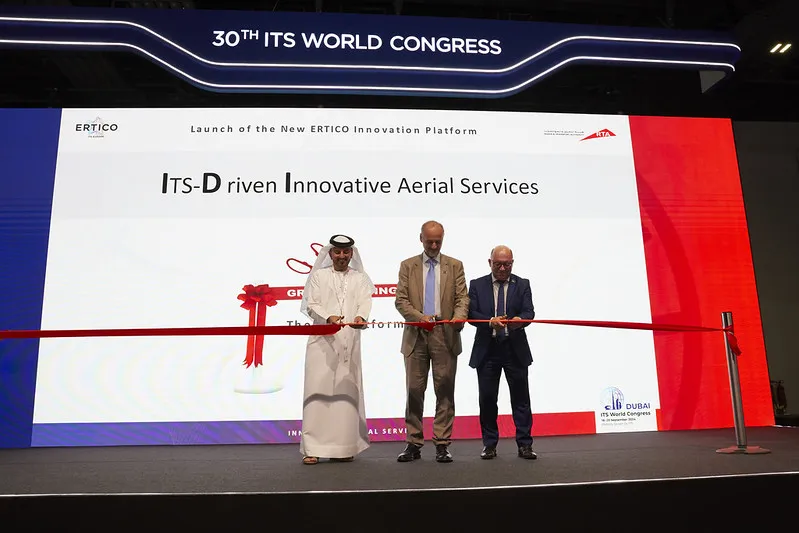
Ertico – ITS Europe officially launched its innovation platform ITS Driven Innovative Aerial Services (IDI) at the 30th ITS World Congress in Dubai.
Its aim is to accelerate the deployment of a "secure, resilient and sustainable" multimodal mobility and public services network by integrating drones and electric vertical take-off and landing (eVTOL) vehicles into existing transport services.
It will focus drone technologies and autonomous systems such as urban air mobility (UAM), innovative air mobility (IAM), advanced aerial mobility (AAM), unmanned aircraft system traffic management (UTM) and U-space.
Founding members are ICCS, SAE International, Continental, City of Hamburg and Satellite Applications Catapult, and the plan is to engage with the government, industry, academia and the general public.
Ertico chairman Dr Angelos Amditis, CEO Joost Vantomme, director of strategy & innovation Vladimir Vorotovic, and senior manager innovation & deployment Dr Vassilis Agouridas, and Khaled Al Awadhi, director of the transportation systems department at Congress host Dubai Roads and Transport Authority were at the launch.
The IDI platform will establish local living labs to serve as pre-commercial fieldwork for introducing and scaling commercial deployment of IAS, addressing services such as individual travel information and adaptive traffic management as well as city operations including emergency medical services and surveillance of critical infrastructure.
Data protection and regulatory focus will be a key focus, as will development of standards, in a bid to create business opportunities while minimising societal impact.
The IDI Platform will leverage synergies between the innovation and business ecosystems of ITS and IAS to enhance urban and regional connectivity and accessibility.









